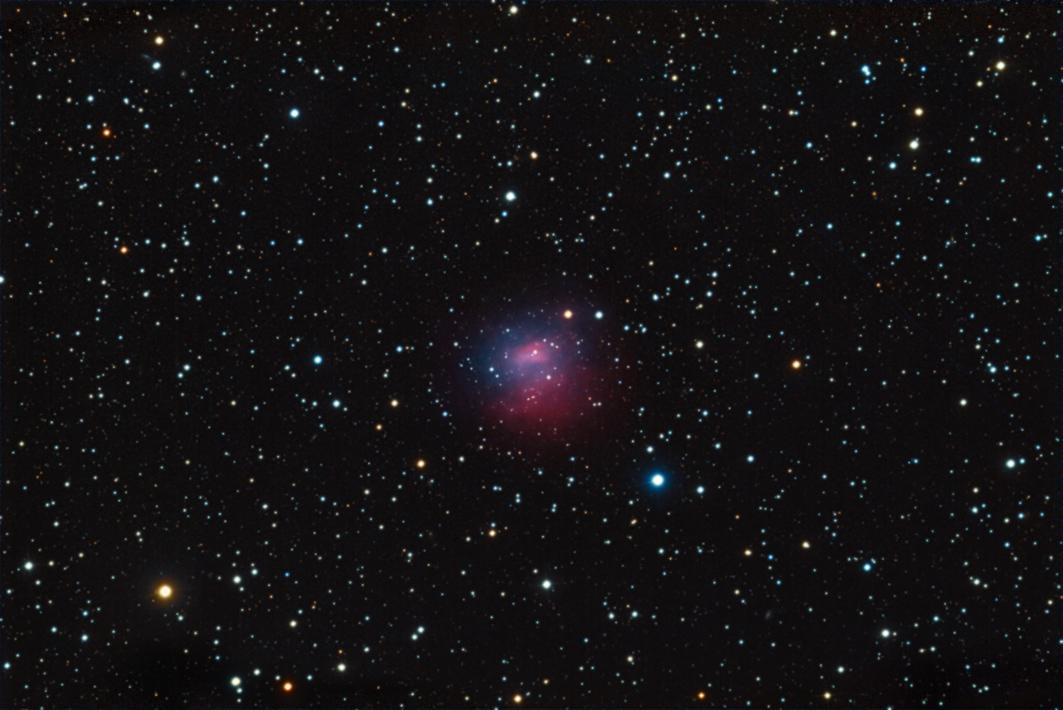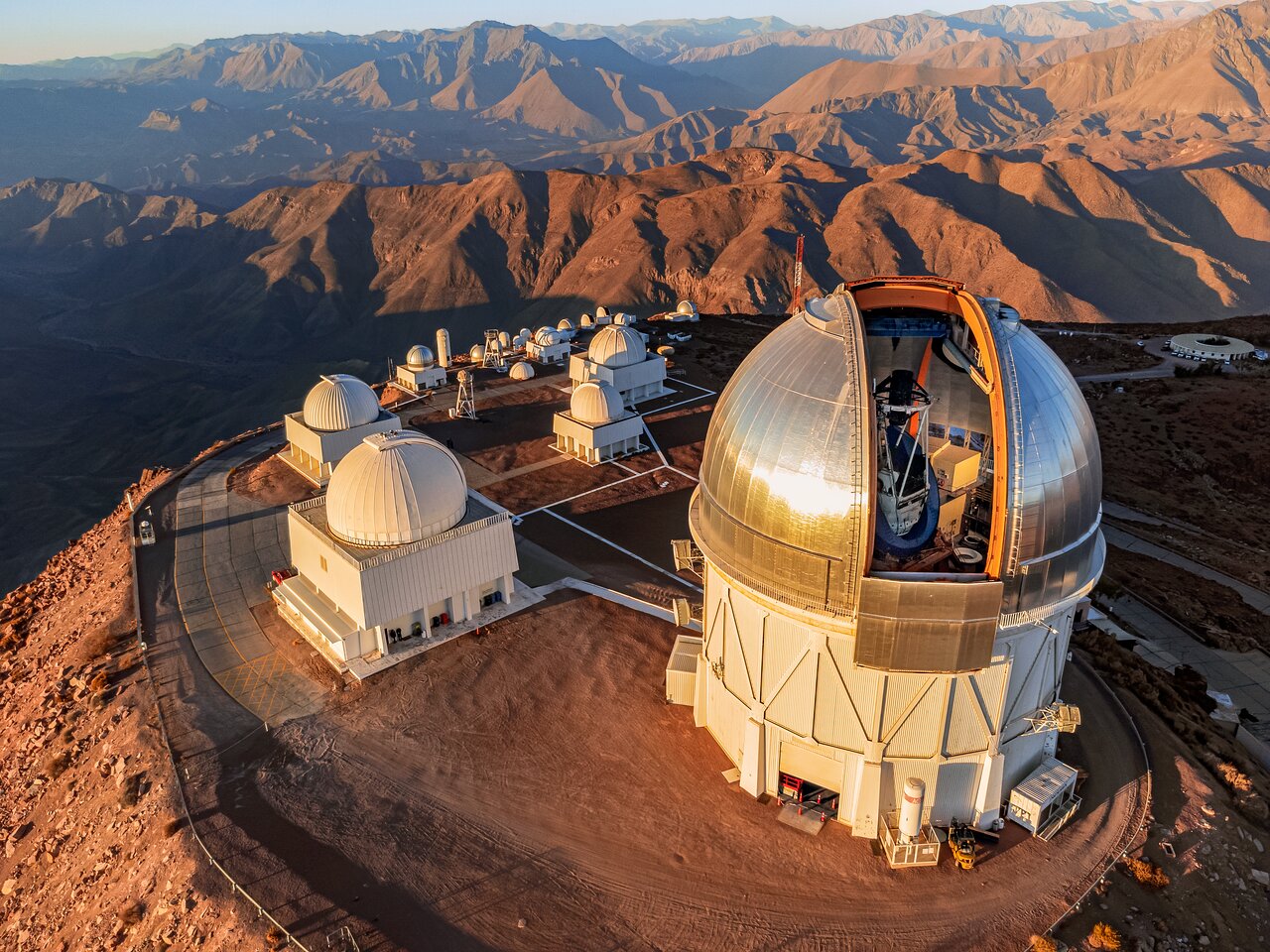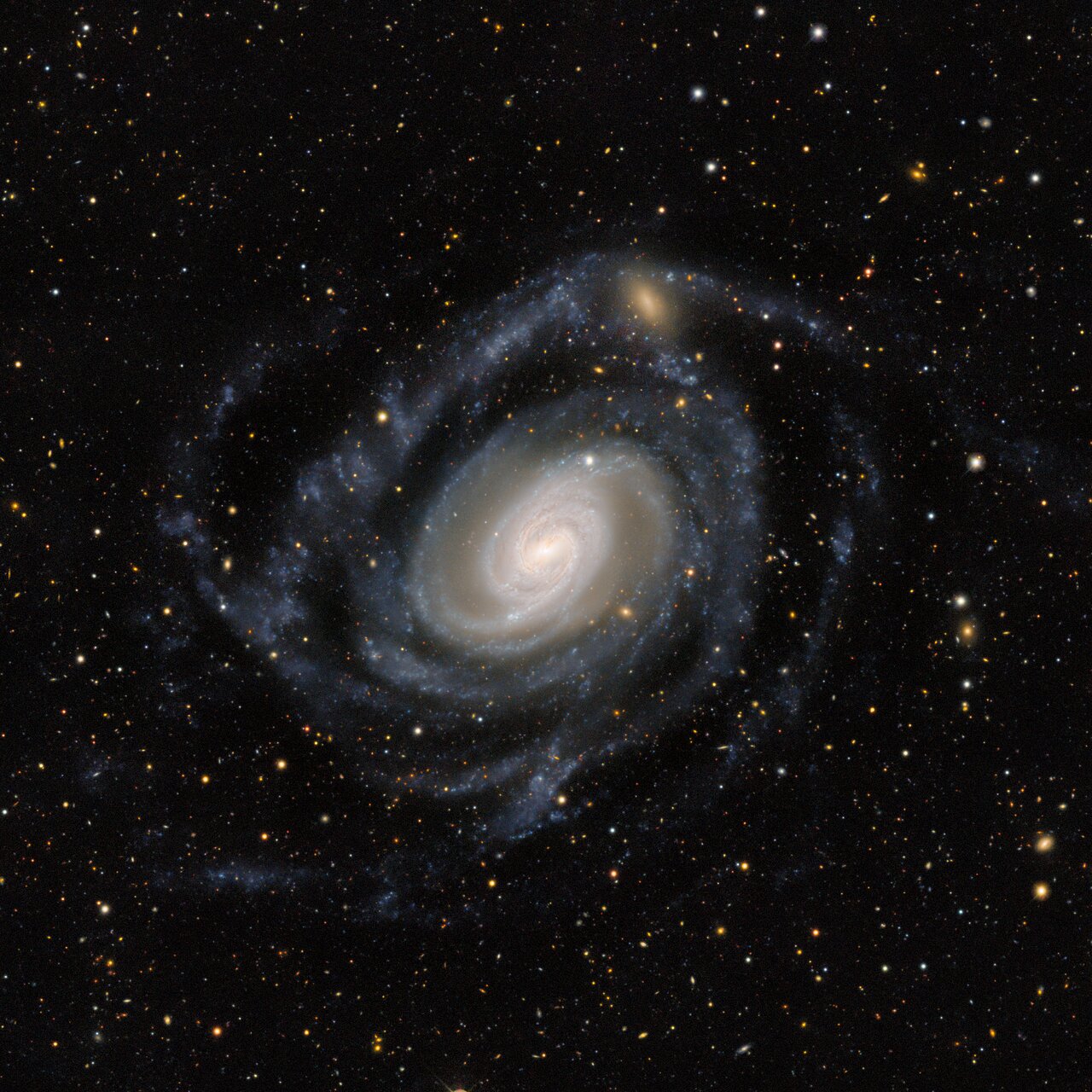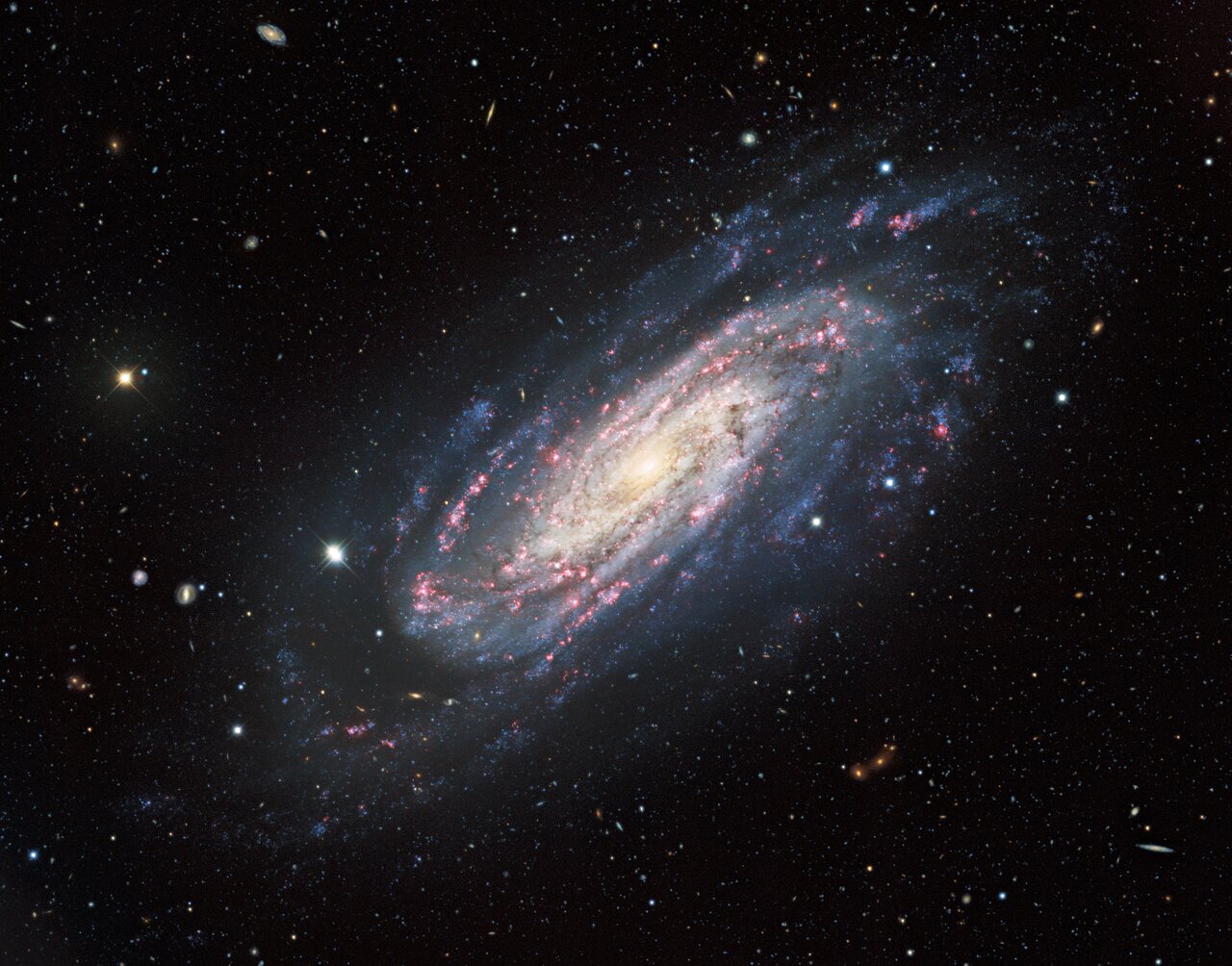Found Images: 2023 August
Found Images: 2023 August
Have you seen a great image or video somewhere that you think would make a great APOD? Nominate it for APOD! Please post as much information here as you have about the image/video with a link to any source(s) for it you know of here, and the editors will take a look.
When posting the image itself, please do not post anything larger than a thumbnail here; please honor the copyright holder's copyright.
Please keep hotlinked images under 500K.
Thank you!
<< Previously
Know the quiet place within your heart and touch the rainbow of possibility; be
alive to the gentle breeze of communication, and please stop being such a jerk. — Garrison Keillor
alive to the gentle breeze of communication, and please stop being such a jerk. — Garrison Keillor
-
starsurfer
- Stellar Cartographer
- Posts: 5347
- Joined: Thu Mar 15, 2012 7:25 pm
Re: Found Images: 2023 August
Murrell 1
https://www.astrobin.com/8yop7f/
Copyright: Andrew Murrell This is one of the earliest amateur planetary nebula discoveries of the 21st century.
https://www.astrobin.com/8yop7f/
Copyright: Andrew Murrell This is one of the earliest amateur planetary nebula discoveries of the 21st century.
-
starsurfer
- Stellar Cartographer
- Posts: 5347
- Joined: Thu Mar 15, 2012 7:25 pm
Re: Found Images: 2023 August
-
starsurfer
- Stellar Cartographer
- Posts: 5347
- Joined: Thu Mar 15, 2012 7:25 pm
Re: Found Images: 2023 August
G2.4+1.4
https://www.astrobin.com/v1ljig/
Copyright: Wolfgang Promper The planetary nebula at the bottom is PN G002.4+01.1, which is also known as the Cell Nebula.
https://www.astrobin.com/v1ljig/
Copyright: Wolfgang Promper The planetary nebula at the bottom is PN G002.4+01.1, which is also known as the Cell Nebula.
-
starsurfer
- Stellar Cartographer
- Posts: 5347
- Joined: Thu Mar 15, 2012 7:25 pm
Re: Found Images: 2023 August
WR 128 nebula and Fal 3
https://www.astrobin.com/v4znmz/
Copyright: Bray Falls The Wolf Rayet nebula around WR 128 was first discovered in 1982. Fal 3 is one of a few planetary nebula discoveries by Bray Falls. Area also includes the globular cluster M71. This overall region is part of the large Sagitta Bubble.
https://www.astrobin.com/v4znmz/
Copyright: Bray Falls The Wolf Rayet nebula around WR 128 was first discovered in 1982. Fal 3 is one of a few planetary nebula discoveries by Bray Falls. Area also includes the globular cluster M71. This overall region is part of the large Sagitta Bubble.
-
starsurfer
- Stellar Cartographer
- Posts: 5347
- Joined: Thu Mar 15, 2012 7:25 pm
Re: Found Images: 2023 August
-
starsurfer
- Stellar Cartographer
- Posts: 5347
- Joined: Thu Mar 15, 2012 7:25 pm
Re: Found Images: 2023 August
LMC
http://www.atacama-photographic-observa ... php?id=189
Copyright: Thierry Demange, Richard Galli and Thomas Petit
http://www.atacama-photographic-observa ... php?id=189
Copyright: Thierry Demange, Richard Galli and Thomas Petit
NOIRLab: CTIO on the Edge of the World
CTIO on the Edge of the World
NOIRLab Image of the Week | CTIO | 2023 Aug 02
NOIRLab Image of the Week | CTIO | 2023 Aug 02
Beautiful sunsets often grace the telescopes of Cerro Tololo Inter-American Observatory (CTIO), a Program of NSF’s NOIRLab. Pictured here are the Víctor M. Blanco 4-meter Telescope (foreground), the SMARTS 1.5-meter, 0.9-meter, and 1.0-meter Telescopes, the Curtis Schmidt Telescope, and many more of the 40+ NOIRLab-operated telescopes in the foothills of the Chilean Andes. At 2200 meters (7200 feet) above sea level and in its relatively isolated position, Cerro Tololo is the perfect place to observe the southern skies. In fact, the summit takes its name from the way it drops away steeply on the northern side, as described by the local Indigenous Diaguita people. After 60 years of fruitful discoveries, CTIO continues to push the boundaries of astronomy with bountiful observations of the abyss up above.
Know the quiet place within your heart and touch the rainbow of possibility; be
alive to the gentle breeze of communication, and please stop being such a jerk. — Garrison Keillor
alive to the gentle breeze of communication, and please stop being such a jerk. — Garrison Keillor
ESO: A Giant under the Moonlight (ELT)
A Giant under the Moonlight
ESO Picture of the Week | ELT | 2023 Aug 07
ESO Picture of the Week | ELT | 2023 Aug 07
It’s now close to 80 metres high — the mammoth steel structure of the ESO’s Extremely Large Telescope (ELT) dome is taking shape in this Picture of the Week, taken on 2 August 2023 under the light of the full Moon. Right now, engineers and construction workers are assembling the structure of the telescope dome in the Chilean Atacama Desert, with progress visible almost every day. When completed, the ELT will be the world’s biggest eye on the sky for visible and infrared observations.
Overall, the ELT project is now more than 50 percent complete. The dome structure visible here will house a pioneering five-mirror optical design, which includes a giant main mirror (M1), 39 metres wide and made up of 798 hexagonal segments. The telescope mirrors and other components are being built by companies in Europe, where work is progressing well too. All of the other systems needed to complete the ELT, including the control system and the equipment needed to assemble and test the telescope, are also coming along nicely.
When finished, the dome will weigh in at 6100 tonnes, and it will need a mind-boggling 30 million bolts to be held together. This huge structure will shelter the telescope during observations, protecting it from the elements. The entire behemoth will rotate on 36 stationary trolleys, allowing astronomers to observe the southern sky from just about any direction they fancy.
Know the quiet place within your heart and touch the rainbow of possibility; be
alive to the gentle breeze of communication, and please stop being such a jerk. — Garrison Keillor
alive to the gentle breeze of communication, and please stop being such a jerk. — Garrison Keillor
ESA: Portrait of a Ghostly Galactic Peacock (NGC 6684)
Portrait of a Ghostly Galactic Peacock
ESA Hubble Picture of the Week | 2023 Aug 07
ESA Hubble Picture of the Week | 2023 Aug 07
The lenticular galaxy NGC 6684 bathes this image from the NASA/ESA Hubble Space Telescope in a pale light. Captured with Hubble’s Advanced Camera for Surveys (ACS), this lenticular galaxy is around 44 million light-years from Earth in the constellation Pavo. Pavo — whose name is Latin for peacock — is a constellation in the southern sky and one of four constellations collectively known as the Southern Birds.
Lenticular galaxies like NGC 6684 (lenticular means lens-shaped) possess a large disc but lack the prominent spiral arms of galaxies like the Andromeda Galaxy. This leaves them somewhere between elliptical galaxies and spiral galaxies, and lends these galaxies a diffuse, ghostly experience. NGC 6684 also lacks the dark dust lanes that thread through other galaxies, adding to its spectral, insubstantial appearance.
The data in this image were captured during a census of the nearby Universe entitled Every Known Nearby Galaxy which aims to observe all galaxies within 10 megaparsecs (32.6 million light-years) that the telescope has not already visited. Before this programme began Hubble had observed roughly 75% of these nearby galaxies, and completing this census will reveal insights into the stars making up a wide variety of galaxies, in a wide variety of environments.
Know the quiet place within your heart and touch the rainbow of possibility; be
alive to the gentle breeze of communication, and please stop being such a jerk. — Garrison Keillor
alive to the gentle breeze of communication, and please stop being such a jerk. — Garrison Keillor
-
starsurfer
- Stellar Cartographer
- Posts: 5347
- Joined: Thu Mar 15, 2012 7:25 pm
Re: Found Images: 2023 August
CTA 1
https://www.astrobin.com/hw8e4v/
Copyright: Rolf Dietrich The planetary nebula Kronberger 50 (Kn 50) can be seen near the top left corner.
https://www.astrobin.com/hw8e4v/
Copyright: Rolf Dietrich The planetary nebula Kronberger 50 (Kn 50) can be seen near the top left corner.
-
starsurfer
- Stellar Cartographer
- Posts: 5347
- Joined: Thu Mar 15, 2012 7:25 pm
Re: Found Images: 2023 August
G182.4+4.3
https://www.astrobin.com/06vhsh/B/
Copyright: Maciej Kapkowski The optical emission of this supernova remnant was discovered fairly recently.
https://www.astrobin.com/06vhsh/B/
Copyright: Maciej Kapkowski The optical emission of this supernova remnant was discovered fairly recently.
-
starsurfer
- Stellar Cartographer
- Posts: 5347
- Joined: Thu Mar 15, 2012 7:25 pm
-
starsurfer
- Stellar Cartographer
- Posts: 5347
- Joined: Thu Mar 15, 2012 7:25 pm
-
starsurfer
- Stellar Cartographer
- Posts: 5347
- Joined: Thu Mar 15, 2012 7:25 pm
NOIRLab: Gentle Giant Galaxy (NGC 289)
Gentle Giant Galaxy
NOIRLab Image of the Week | DECam | 2023 Aug 09
NOIRLab Image of the Week | DECam | 2023 Aug 09
In the constellation Sculptor lies this large extended spiral galaxy called NGC 289. Despite being around 75 million light-years away, the light of NGC 289 is stunningly captured here by the Dark Energy Camera (DECam) on the Víctor M. Blanco 4-meter Telescope at Cerro Tololo Inter-American Observatory (CTIO), a Program of NSF’s NOIRLab. The galaxy’s bluish arms reach through the expanse of space over 100,000 light-years, larger than the size of our own Milky Way. It’s classified as a Type II Seyfert galaxy with its ripe collections of star formation and bright core, but it’s also relatively faint. Studies have found that the galaxy contains large amounts of dark matter, which is a common feature of all galaxies with a low surface brightness. Dark matter is yet to be directly observed, which led the US Department of Energy to build the DECam in order to study the nature of dark matter. Since the conclusion of its survey, DECam has been available to other scientists for use, such as for this image of NGC 289.
Know the quiet place within your heart and touch the rainbow of possibility; be
alive to the gentle breeze of communication, and please stop being such a jerk. — Garrison Keillor
alive to the gentle breeze of communication, and please stop being such a jerk. — Garrison Keillor
-
starsurfer
- Stellar Cartographer
- Posts: 5347
- Joined: Thu Mar 15, 2012 7:25 pm
Re: Found Images: 2023 August
NGC 3198
https://noirlab.edu/public/images/iotw2035a/
Copyright: KPNO/NOIRLab/NSF/AURA.
Acknowledgments:
PI: M T. Patterson (New Mexico State University)
Image processing: Travis Rector (University of Alaska Anchorage), Mahdi Zamani & Davide de Martin
https://noirlab.edu/public/images/iotw2035a/
Copyright: KPNO/NOIRLab/NSF/AURA.
Acknowledgments:
PI: M T. Patterson (New Mexico State University)
Image processing: Travis Rector (University of Alaska Anchorage), Mahdi Zamani & Davide de Martin
-
starsurfer
- Stellar Cartographer
- Posts: 5347
- Joined: Thu Mar 15, 2012 7:25 pm
-
starsurfer
- Stellar Cartographer
- Posts: 5347
- Joined: Thu Mar 15, 2012 7:25 pm
-
starsurfer
- Stellar Cartographer
- Posts: 5347
- Joined: Thu Mar 15, 2012 7:25 pm
-
starsurfer
- Stellar Cartographer
- Posts: 5347
- Joined: Thu Mar 15, 2012 7:25 pm
Re: Found Images: 2023 August
Bubble Nebula (NGC 7635) region
https://www.astrobin.com/leco7l/
Copyright: Emanuele La Barbera and Michele Russo
https://www.astrobin.com/leco7l/
Copyright: Emanuele La Barbera and Michele Russo
-
starsurfer
- Stellar Cartographer
- Posts: 5347
- Joined: Thu Mar 15, 2012 7:25 pm
-
starsurfer
- Stellar Cartographer
- Posts: 5347
- Joined: Thu Mar 15, 2012 7:25 pm
Re: Found Images: 2023 August
vdB158
https://www.astrobin.com/kjb701/
Copyright: Jens Zippel Somewhere the planetary nebula K1-20 can be found.
https://www.astrobin.com/kjb701/
Copyright: Jens Zippel Somewhere the planetary nebula K1-20 can be found.
ESO: It’s full of stars! (NGC 6723)
It’s full of stars!
ESO Picture of the Week | VISTA | 2023 Aug 14
VISIONS: The VISTA Star Formation Atlas — I. Survey Overview ~ Stefan Meingast et al
ESO Picture of the Week | VISTA | 2023 Aug 14
This Picture of the Week — taken with ESO’s Visible and Infrared Survey Telescope (VISTA) at Paranal Observatory in Chile — might look like a scene from a snowy winter's night, but it’s not. It’s an infrared image of NGC 6723, a globular cluster located about 28 000 light years from Earth in the constellation Sagittarius. Globular clusters are spherical-shaped groups of stars, tightly bound together by gravity. Their name is derived from the Latin word globulus, meaning small sphere — somewhat misleading given that NGC 6723, as most globular clusters, contains hundred of thousands to millions of stars.
So far, astronomers have found more than 150 globular clusters in our galaxy, the Milky Way, with most of them estimated to be at least 10 billion years old and hosting some of the oldest stars in the galaxy.
Globular clusters were key to pinpointing our own location within the Milky Way in the early 20th century. American astronomer Harlow Shapley measured the distances to several globular clusters, and noticed that they were arranged in a roughly spherical distribution, but the Sun was not at its centre. He correctly inferred that the heart of the Milky Way lays at the centre of this distribution of globular clusters, placing the Sun in the suburbs of the galaxy.
VISIONS: The VISTA Star Formation Atlas — I. Survey Overview ~ Stefan Meingast et al
- Astronomy & Astrophysics 673:A58 (May 2023) DOI: 10.1051/0004-6361/202245771
- arXiv > astro-ph > arXiv:2303.08831 > 15 Mar 2023
- Astronomy & Astrophysics 673:A59 (May 2023) DOI: 10.1051/0004-6361/202245772
- arXiv > astro-ph > arXiv:2303.08840 > 15 Mar 2023
Know the quiet place within your heart and touch the rainbow of possibility; be
alive to the gentle breeze of communication, and please stop being such a jerk. — Garrison Keillor
alive to the gentle breeze of communication, and please stop being such a jerk. — Garrison Keillor
ESA: A clear view of a galaxy cluster (Abell 3322)
A clear view of a galaxy cluster
ESA Hubble Picture of the Week | 2023 Aug 14
ESA Hubble Picture of the Week | 2023 Aug 14
The massive cluster Abell 3322 is featured in this image from the NASA/ESA Hubble Space Telescope, in which the galaxy 2MASX J05101744-4519179 basks in the centre. This distant galaxy cluster is a cosmic leviathan that is highly luminous at X-ray wavelengths. Observing galaxy clusters like Abell 3322 can advance our understanding of the evolution and interactions of dark and luminous matter in galaxy clusters, and also reveals powerful gravitational ‘telescopes’ that magnify distant objects through gravitational lensing. Knowing the location of these lenses can enable future observations with both Hubble and the NASA/ESA/CSA James Webb Space Telescope. The galaxy cluster is located in the constellation Pictor, around 2.6 billion light-years from Earth.
- A cluster of elliptical galaxies, visible as a crowd of oval shapes, each glowing around a bright core. The elliptical galaxy that appears largest by far is in the centre, with the other largest galaxies close to it. They are surrounded by a variety of more distant stars and galaxies, in many shapes and sizes but all much smaller, on a dark background. (Image Credit: ESA/Hubble & NASA, H. Ebelin)
Two of Hubble’s instruments joined forces to create this image: Wide Field Camera 3 (WFC3) and the Advanced Camera for Surveys (ACS). Both are third-generation instruments that offer superb image quality and high sensitivity to astronomers studying a range of scientific questions. Both instruments provide images of wide areas of the night sky, but view slightly different parts of the electromagnetic spectrum. WFC3 spans the spectrum from the ultraviolet through to visible light and the near-infrared. In contrast to the wide panchromatic coverage of WFC3, ACS was optimised for visible-light observations.
Getting the best from Hubble requires instruments to use built-in corrective optics to account for the effects of the primary mirror's aberration. During the construction of Hubble, a faulty instrument caused the primary mirror to be very precisely ground to slightly the wrong shape by only 0.0002 mm. A corrective instrument called COSTAR was developed to account for this tiny discrepancy, and later instruments like WFC3 and ACS were built with their own corrective optics.
Know the quiet place within your heart and touch the rainbow of possibility; be
alive to the gentle breeze of communication, and please stop being such a jerk. — Garrison Keillor
alive to the gentle breeze of communication, and please stop being such a jerk. — Garrison Keillor








